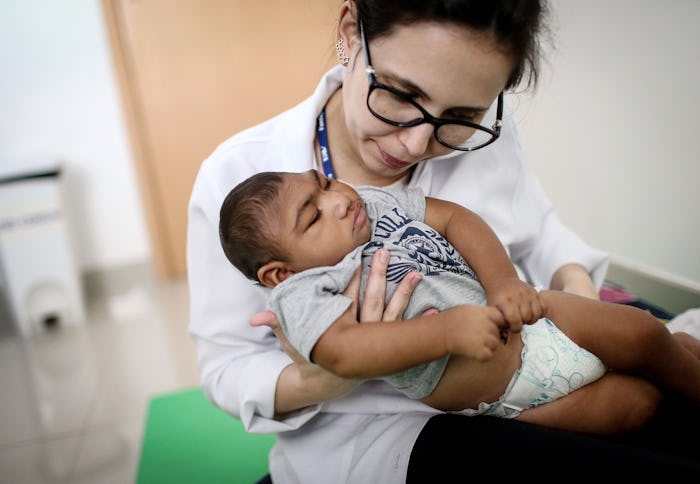Life

Congenital Zika Syndrome Is Now Officially A Thing, As The Virus Continues To Spread
It’s been known for some time now that the Zika virus has been linked to multiple devastating birth defects, such as microcephaly, which results in unusually small heads and undeveloped brains. Now, as the virus continues to spread within more than 45 countries worldwide, researchers have officially concluded that microcephaly and a host of other symptoms be defined under one umbrella condition: congenital Zika syndrome. The new title was defined by researchers from the Centers for Disease Control and Prevention (CDC) because of the unique pattern of birth defects that appear to only happen when a Zika infection occurs during pregnancy.
In the report, originally published in JAMA Pediatrics — a medical journal that publishes research on the child health — the CDC researchers laid out the distinct pattern of birth defects that have now been linked to the heartbreaking virus.
The researchers wrote in the report:
We conclude that congenital Zika syndrome is a recognizable pattern of structural anomalies and functional disabilities secondary to central and, perhaps, peripheral nervous system damage. Although many of the components of this syndrome, such as cognitive, sensory, and motor disabilities, are shared by other congenital infections, there are 5 features that are rarely seen with other congenital infections or are unique to congenital Zika virus infection.
As The Washington Post detailed in layman's terms, those five features are:
- Severe microcephaly (abnormally small head size) with partly collapsed skull.
- Decreased brain tissue with a specific pattern of calcium deposits indicating brain damage
- Damage to the back of the eye with a specific pattern of scarring and increased pigment
- Joints with limited range of motion, such as clubfoot
- Too much muscle tone, restricting movement soon after birth
The CDC researchers came to their finalization after analyzing 34 public reports about the birth defects suffered by infants infected with Zika while their mothers were pregnant. Only two of the reports were from the United States and a few others in French Polynesia and Spain, but 29 of the cases came from Brazil, where the outbreak began in April 2015.
As previous research has supported, this report's conclusion found that the most common timing of infection happened during the first or second trimester of pregnancy. Although infants with birth defects infected during the third trimester were also reported, 90 percent of almost 2,000 pregnant women in Colombia infected with Zika noted that their child had no apparent anomalies.
But that doesn't necessarily mean that all children born to Zika-infected mothers who don't show symptoms immediately won't have problems later. Catherine Spong, an obstetrician-gynecologist and the institute’s acting director, told The Washington Post that those children should be regularly monitored regardless, as some of these problems don't show up until months later.
"Although the severe cases are teaching us a lot, the impact is likely much more broad, and these impacts, although less striking, may be much more widespread and may need more monitoring and interventions," Spong told The Washington Post.
While this new title is a heartbreaking chapter to the Zika epidemic, the clear description of congenital Zika syndrome will help doctors recognize a pattern more easily and will hopefully provide more insight to help combat this devastating virus.